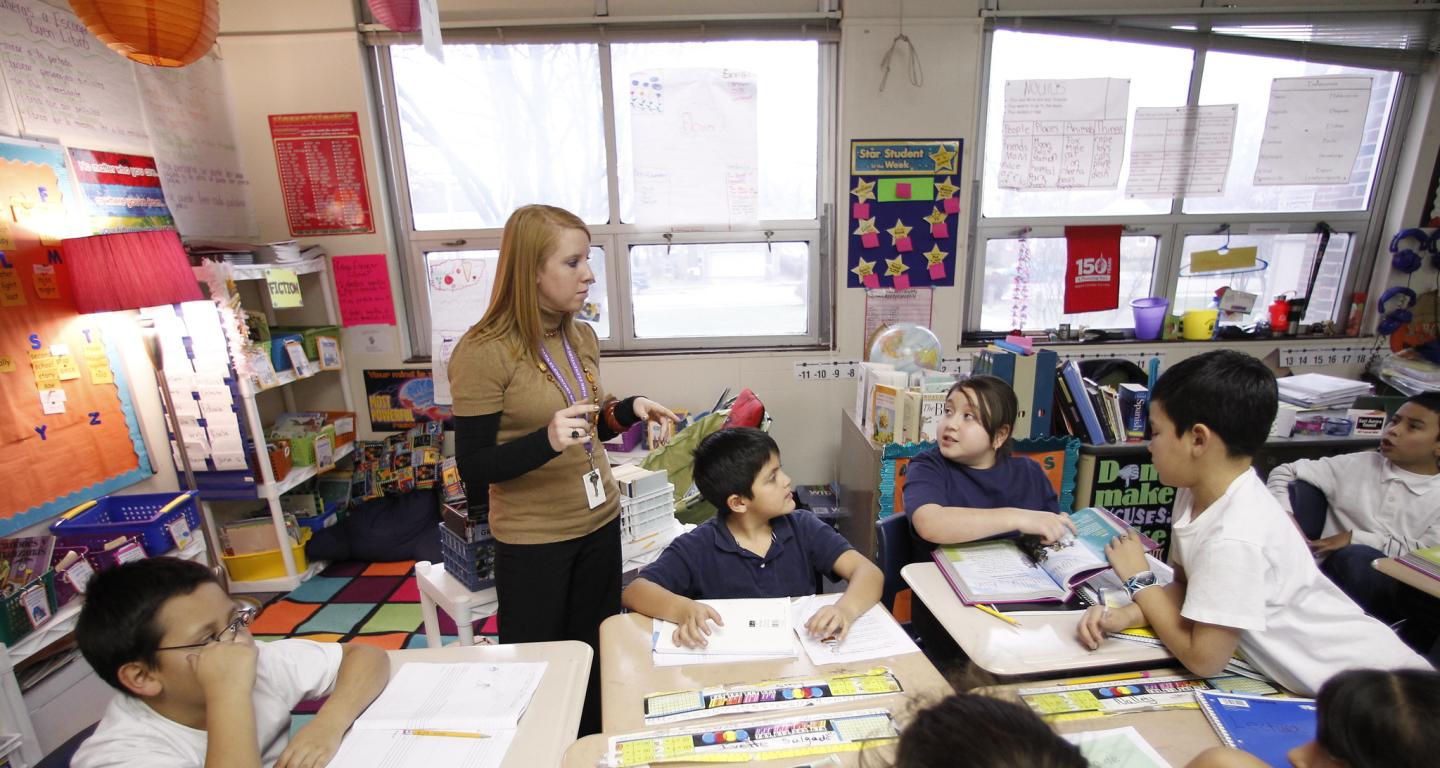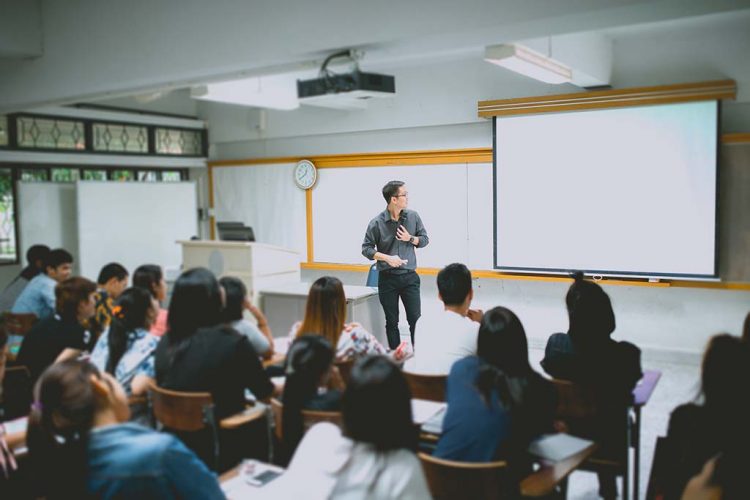Comprehensive Primary Science Tuition Singapore for Primary School Students
Comprehensive Primary Science Tuition Singapore for Primary School Students
Blog Article
Exploring the Different Mentor Approaches in Primary Scientific Research Education Today
The landscape of key science education is advancing, with different training methods getting prominence in contemporary classrooms. Inquiry-based learning, hands-on experiments, and the integration of modern technology are redefining exactly how instructors involve young minds. Furthermore, joint methods and set apart instruction are being utilized to accommodate the varied requirements of pupils, improving both engagement and understanding. As we take a look at these methodologies, concerns develop regarding their effectiveness and the ramifications for future academic techniques. What might these changes in strategy mean for the following generation of learners?
Inquiry-Based Discovering
Inquiry-Based Understanding (IBL) is a pedagogical method that encourages trainees to discover clinical ideas via wondering about, examination, and hands-on trial and error. This technique emphasizes the duty of pupils as energetic participants in their understanding, advertising vital reasoning and problem-solving skills. By engaging with real-world concerns, pupils come to be inspired and curious, which improves their understanding of clinical concepts.
In IBL, educators serve as facilitators, leading students as they navigate their inquiries rather than providing details directly. This student-centered strategy permits distinction, accommodating various discovering rates and styles. Trainees develop skills in creating theories, making experiments, and analyzing data, which are crucial for clinical literacy.
Additionally, IBL fosters cooperation among students, encouraging them to share ideas and searchings for. This cumulative query advertises social skills and a sense of neighborhood within the classroom. Moreover, the procedure of query encourages resilience, as pupils learn to embrace failing as a stepping rock toward understanding.
Hands-On Experiments
Hands-on experiments are an essential element of effective scientific research education, enhancing the concepts of inquiry-based discovering. These experiments permit trainees to involve directly with clinical principles, promoting a much deeper understanding through experiential learning. By controling products and observing results, young learners can realize abstract concepts in substantial ways.
Such tasks promote essential reasoning and problem-solving abilities, as students hypothesize results, conduct experiments, and assess outcomes. This process urges them to ask questions, fine-tune their understanding, and develop a scientific attitude. Hands-on experiments can be customized to diverse understanding designs, making sure that all students have the chance to involve meaningfully with the content.
Furthermore, hands-on experiments frequently encourage partnership amongst peers, advertising synergy and communication skills. Operating in groups makes it possible for trainees to share concepts, review findings, and discover from each other, which boosts their total instructional experience.
Incorporating hands-on experiments right into the primary science curriculum not just enriches the finding out atmosphere but additionally cultivates a long-lasting passion in science. By proactively taking part in their education and learning, students are more probable to develop a passion for clinical query that extends beyond the class.

Technology Assimilation
Integrating technology into key science education has actually become significantly vital in cultivating trainee interaction and improving learning end results. Using electronic tools, such as interactive simulations, virtual laboratories, and academic software application, provides pupils with possibilities to discover scientific principles in ingenious methods. These sources help with a deeper understanding of complex subjects by allowing students to envision and control variables that would be impractical in a traditional classroom setup.
Furthermore, modern technology integration motivates customized finding out experiences. Students can progress at their own rate, revisiting tough concepts with multimedia resources, which cater to different learning styles. This versatility not just sustains individual development yet also cultivates a feeling of autonomy in learners.
Furthermore, innovation works as a bridge to real-world science, connecting pupils with existing research and expert contributions. Access to online databases and scientific journals widens students' point of views on clinical query and promotes vital assuming abilities.
Collaborative Discovering
Joint knowing plays a vital role in primary scientific research education by cultivating synergy and communication abilities among students. This method encourages students to collaborate, share knowledge, and take part in analytic, which boosts their understanding of scientific principles. By participating in team activities, trainees learn to articulate their ideas, listen to varied viewpoints, and bargain solutions, all of which are essential skills in both scholastic and real-world contexts.

Research study indicates that joint learning can cause boosted inspiration and engagement in scientific research subjects, as trainees find pleasure in shared experiences (primary science tuition Singapore). In addition, this strategy prepares students for future joint ventures, outfitting them with the skills needed for effective teamwork in college and expert environments. Inevitably, accepting collaborative learning in key science go to these guys education can considerably improve the learning experience and promote a much deeper understanding of clinical questions
Separated Guideline

Set apart instruction can manifest in various ways, such as differing the web content, procedures, or products of discovering. Educators may utilize tiered tasks that provide varying degrees of intricacy, allowing pupils to function at their particular preparedness degrees. Furthermore, versatile grouping methods can facilitate partnership among trainees with different capabilities, promoting peer understanding.
Assessment plays a crucial role in this method, as it notifies instruction and assists teachers understand each trainee's unique needs. Formative evaluations, such as quizzes and observations, visit this site right here can assist teachers in adjusting their methods to boost learning outcomes. primary science tuition Singapore. Inevitably, by carrying out distinguished instruction in key science education and learning, educators can cultivate a much more equitable and efficient learning atmosphere, equipping all students to reach their full possibility in recognizing clinical phenomena
Final Thought
In summary, the diverse teaching strategies in key science education and learning, consisting of inquiry-based understanding, hands-on experiments, technology combination, collaborative knowing, and differentiated direction, jointly add to a much more reliable discovering atmosphere. These methods advertise vital thinking, analytic skills, and a much deeper comprehension of clinical concepts. By applying these approaches, instructors can develop engaging and supportive class that deal with the different demands of students, ultimately promoting a long-lasting interest in scientific research and improving scholastic achievement.
Inquiry-Based Discovering (IBL) is an instructional technique that encourages students to check out clinical ideas through wondering about, examination, and hands-on trial and error.Collaborative knowing plays an essential function in primary science education and learning by cultivating team effort and interaction abilities among trainees.Research study suggests that collective discovering can lead to boosted motivation and interaction in science topics, as pupils find pleasure in common experiences.In cultivating an inclusive discovering setting, separated direction emerges as a key technique to accommodate the varied demands and abilities of trainees in main scientific research education. Ultimately, by applying set apart guideline in primary science education and learning, educators can grow an extra equitable and effective understanding setting, empowering all students to reach their full potential in understanding scientific phenomena.
Report this page